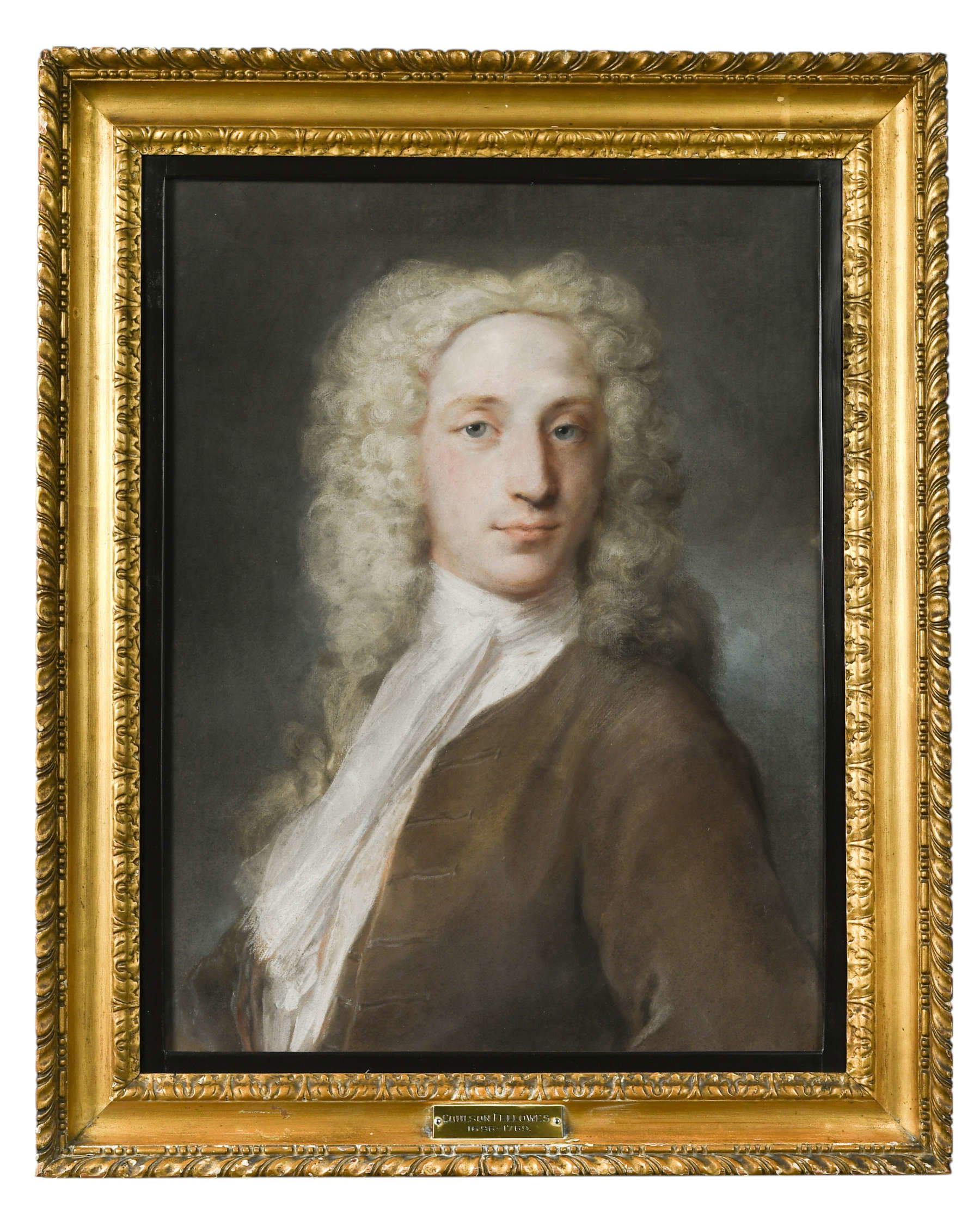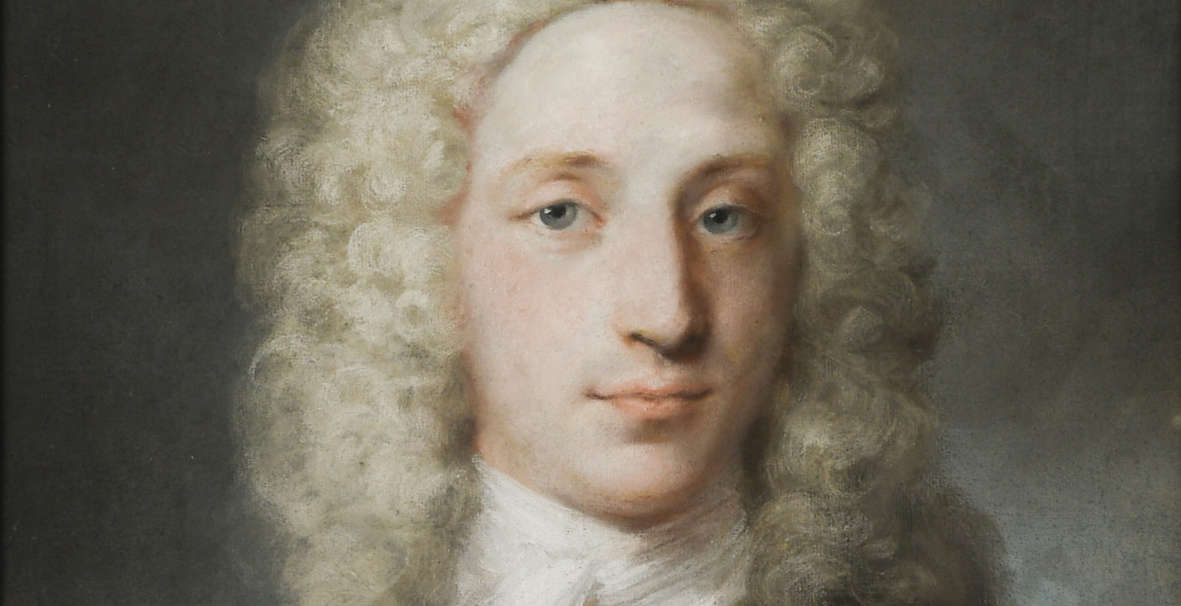A new world record enshrines the fame of Rosalba Carriera (Venice, 1673 - 1757), the great Venetian painter who pioneered the pastel technique. Day before yesterday, at the Cheffins auction house in Cambridge, her Portrait of Coulson Fellowes, newly resurfaced and put on the market after remaining for three centuries in the estate of the same family, reached 508,000 pounds (583,000 euros), setting an all-time record for the artist. The work depicts Coulson Fellowes, an English aristocrat, at the age of 28, and was executed in 1724 during the nobleman’s Venetian sojourn.
The work, presented on the market for the first time in more than three centuries, was competed for by numerous bidders, both British and international, only to be awarded via telephone to a private collector based in the United Kingdom. The initial estimate of between £15,000 and £25,000 (€17-29,000) was far exceeded, confirming the growing interest in the Venetian painter, already famous in her own time and now considered a central figure in 18th-century portraiture. The previous record belonged to another of her pastels, the Portrait of Gustavus Hamilton, which sold in New York in 2002 for £421,250. The Cambridge auction thus set a new threshold, enshrining recognition of the quality and historical value of Carriera’s work.
The painting, a half-length portrait made in Venice, is found in the artist’s diary, which records Coulson Fellowes’ visit to his studio during the Grand Tour, between 1723 and 1725. That of Fellowes, at the time a young scion destined for a political career, was one of many commissions from English aristocrats who turned to Carriera in the 18th century for a memento of their trip to Italy.
Coulson Fellowes, born in 1696, was the son of lawyer William Fellowes of Eggesford, Devon. When his father died in 1725, he inherited Eggesford Manor. He was a landowner and MP for the Huntingdonshire constituency, which he represented from 1741 to 1761. In 1737 he bought Ramsey Abbey and, together with Dr. John Addenbrooke, became a leading supporter of the Cambridge hospital of the same name. The portrait remained in the family collection for a long time, kept at Shotesham Park in Norfolk until the death of Major Charles Fellowes in 1979. After the estate was sold, however, the work remained the family’s property and is now being auctioned for the first time since its execution.

Rosalba Carriera was among the most sought-after painters of her time. Her skill with pastel, a technique she helped elevate to the status of an autonomous genre, secured her commissions from nobles, sovereigns and intellectuals throughout Europe. Her portraits include Louis XV of France, Horace Walpole and Antoine Watteau. The Venetian artist was able to transform portraiture into a tool of immediate expression, capable of restoring intimacy, freshness and naturalness, characteristics that impressed Grand Tour travelers and European courts.
Luke Bodalbhai, painting specialist at Cheffins, emphasized the importance of the result obtained: “This is a particularly elegant study that highlights Rosalba’s talent as one of the leading figures in 18th-century portraiture. This work is fascinating because it stems from the encounter between one of the most innovative artists of her time and a young English traveler in the crucial years of the Grand Tour. Rosalba Carriera was one of the first women to gain international fame as a portrait painter, and to be able to offer this work on the market for the first time was a privilege.”
The success of the auction confirms the interest Carriera was able to garner as early as the first decades of the 18th century, particularly among British aristocrats. In 1721 the artist wrote to the French painter Nicolas Vleughels, director of the French Academy in Rome, that she had been “attaqué par des Angles,” pointing out the growing number of commissions from England. Beginning in 1723, moreover, her diary notes numerous commissions obtained through Joseph Smith, British consul in Venice and an important patron, who most likely introduced Fellowes to the painter.
The 1724 work comes at a key moment in Carriera’s career, shortly after her 1719-1720 stay in Paris. During that trip, the artist was the guest of collector Pierre Crozat and met some of the leading painters of the time, such as Hyacinthe Rigaud, Nicolas de Largillière and Watteau himself, with whom she became friends and with whom she shared a common Rococo spirit. It was in Paris that Carriera consolidated her international reputation, before returning to Venice and continuing to receive prestigious commissions.
According to Bodalbhai, Fellowes’s portrait expresses “spontaneity, directness and intimacy, qualities that brought Rosalba international celebrity in the early 18th century. Her relationship with Watteau reflects a typically Rococo taste, perfectly rendered through pastel, which became the hallmark of her production.”
Rosalba Carriera’s works are now held in the world’s most important museums, from the Louvre to the National Gallery in London, from the Frick Collection in New York to European and American institutions that hold portraits and allegories by her hand. The Cambridge sale not only sets an auction record but also reaffirms the Venetian painter’s central role in the history of European art.
The value achieved, well above initial estimates, testifies to the vitality of the market for eighteenth-century works and the focus on female figures who, like Carriera, were able to assert themselves in an environment dominated by male artists. The Cheffins auction thus marked an important moment in the recognition of an artist who, even in her own time, was able to establish herself with originality and mastery, paving the way for generations of female painters and consolidating pastel as a technique of great artistic dignity.
 |
| World record for Rosalba Carriera: newly resurfaced portrait sold for £508,000 |
Warning: the translation into English of the original Italian article was created using automatic tools. We undertake to review all articles, but we do not guarantee the total absence of inaccuracies in the translation due to the program. You can find the original by clicking on the ITA button. If you find any mistake,please contact us.